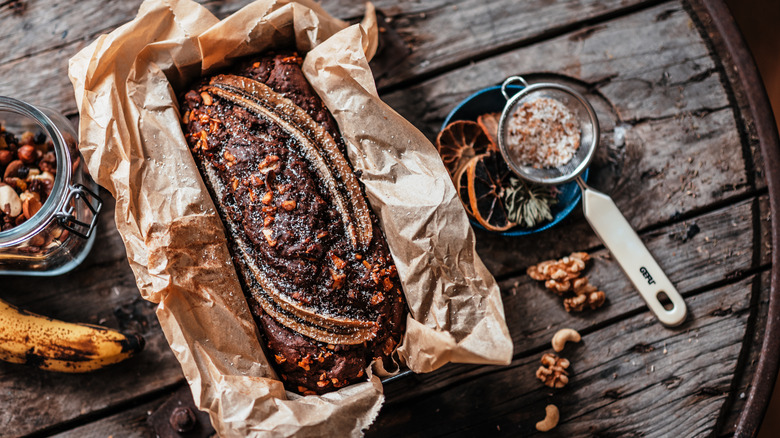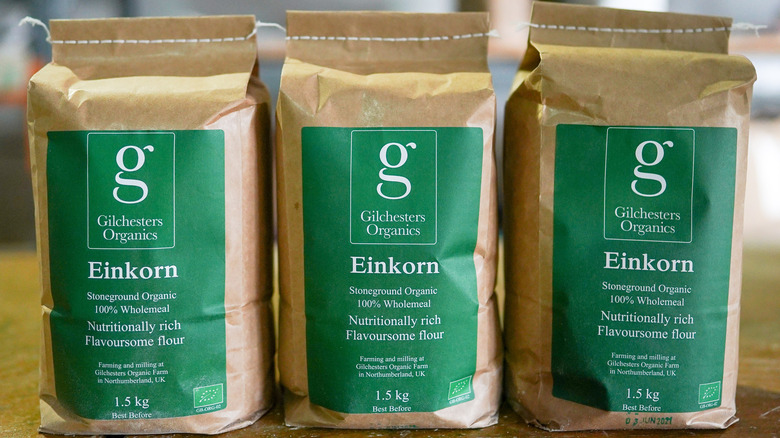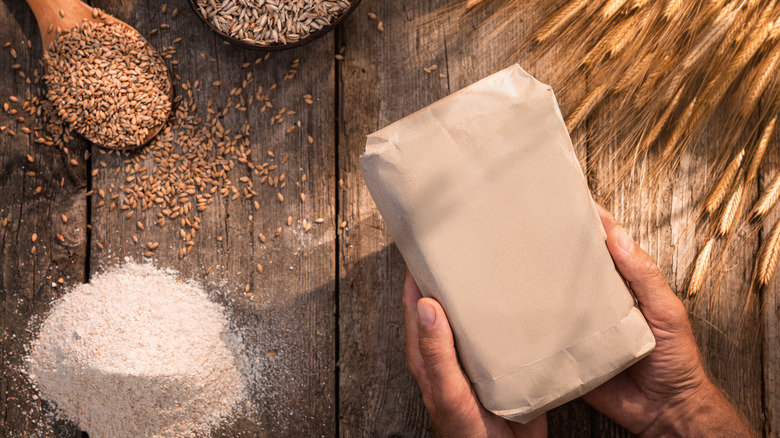The Toasty Flour Your Banana Bread Needs
Whether you add cups of walnuts or keep to a pared-down recipe, banana bread manages to amplify the sweet, caramel notes of ripe bananas. And though it tastes heavenly on its own, many aficionados will toast and butter their slice.
But what if we told you there's another way to add nutty, toasty notes to each bake? The key is to use einkorn flour. Derived from a type of milled farro, the berries are a species of wheat that delivers a noticeable change in flavor.
If you've ever wondered what farro tastes like, the answer is an ancient cereal that's rich and malty. Einkorn and other species of farro trace their roots back 10,000 years to the Fertile Crescent, and in the last decade, they've climbed back into popularity among modern cooks. Though this variety doesn't behave exactly the same as our usual wheat flour, it brings a warmth to baked goods that's worth accommodating.
What is einkorn flour?
Einkorn, which translates to "single grain" in German, are small wheat berries that are ground into flour — similar to the powder you find in a bag of whole wheat flour. There are a few reasons bakers are reaching for the petite, rice-sized grains, which you can also cook whole and use in salads and risottos. The wheat is packed with nutrients and contains more protein than regular wheat.
Best of all, it's easier to digest if you're sensitive to gluten — though it's not gluten-free, so don't serve it to those with an allergy or celiac disease. When it comes to baking with flour, you'll find it commonly makes appearances in sourdough, baked goods, pasta, and more. The difference in gluten makes it a little less stable, but all the more reason to use it in rolled pie crusts and sliced shortbreads.
Unfortunately, the ancient cultivar remains tough to track down in grocery stores. But it's increasingly making appearances at farmers' markets and small mill operations, giving hope to its fans. The grain also has a hard shell, also called a hull, which makes it slightly more challenging to process. As such, you can expect it to cost a bit more than standard baking flours.
Baking with the ancient grain
To use it, swap it evenly for all-purpose or whole wheat flour in your basic banana bread recipe. Make sure to pick up the whole wheat version of the einkorn flour, as all-purpose-style will have the flavorful hull filtered out. To get the smoothest batter, sift the flour as you add it to avoid lumps and to combine faster, as it can get gluey if overmixed.
You may notice your batters look slightly different, as the cereal is slower to absorb moisture. As you get the hang of baking with it, you may find you need to scale down the amount of liquid you use. We recommend giving doughs plenty of time to rest and hydrate. The change in gluten can also make it challenging for cakes to plump up and stay strong, so you can also strengthen the mix by increasing the number of eggs in your recipe. One extra should do the trick.
The benefit of sticking with the new (but ancient) flour is that your treats will have a sweet and toasty taste that's hard to beat. Einkorn's nutty hull shines alongside fat, caramelized flavors, and nuts, making it a perfect pairing for browned butter and ripe bananas. If you're hoping to start with a less ambitious project or have nailed banana bread, know that the flour also works beautifully in pancakes and waffles. We suggest adding plenty of bananas to your batter to kick off your ancient grain obsession.



